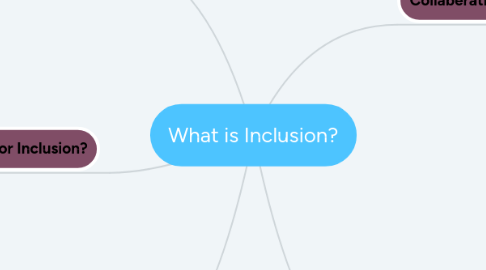What is Inclusion?
by beccie Roper


1. Inclusive practices
1.1. "A school is working to ensure that all children who attend, whatever their background, do not experiance barriers to their learning and participation."
1.2. It is important to communicate any plans or suggestions past the young person
1.3. Students should be present and active in creating an EHCP (Education,Health Care Plans)
1.4. Young people should be listened to when presenting their ideas around their learning and their enviroment
1.5. A less restrictive enviroment, flexibility, choice, active learning are all key points for inclusive practice
2. Equality or Inclusion?
2.1. Equality-all people will be treated equally and fairly
2.1.1. For example two people will be given the exact same ladder to reach the tree
2.2. Inclusion- feeling valued and ensuring everyone is able to get the right level of resources and support.
2.2.1. E.G. Giving a shorter person a taller ladder
3. Examples of inclusion in primary schools
3.1. Disabled toilets
3.2. Breakfast and after school club
3.3. Hot school meals
3.4. Specialise equipment
3.5. Classroom planning
3.6. Additional teacher support
3.7. Areas for circiut breakers
3.8. Lunch clubs and activitys
4. Collaberation
4.1. Collaberation is essential for everybody to feel involved.
4.2. To collaberate everyone must show a commitment to learning
4.3. Allow people of all backgrounds and levels to have an active role in the development
4.4. To discuss and respect a variety of views and opinions
4.5. "Community of provision" could be connected to ways support could be provided
4.6. why should students be collaberators?
4.6.1. Students produce school outcomes
4.6.2. Students can communicate what will strengthen their ability to learn.
4.6.3. Participation helps young people develop
4.6.4. Evaluate their own concerns in the school
4.6.5. Encouraging young people to speak openly
